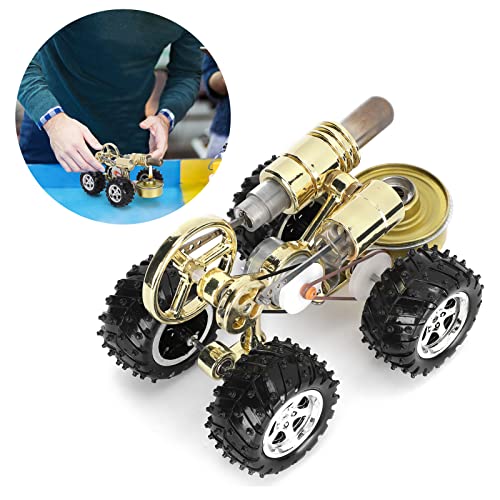Hello folks!
I have been a member of HMEM for several years (since 2008 , and I have enjoyed looking at everyones engine builds over the last 5 years, but I certainly have not been an active forum member.
When I joined, I was living in a rented farmhouse, and had a shed that doubled as a garage and workshop. Pretty nice set up for the most part, but the shed was extremely dusty and dirty. It was converted from an old grainary. It was very draughty, and while it kept the worst of the weather off my tools and bikes, it was simply too cold (being in Minnesota - and the shed was totally uninsulated) in winter to work in.
However, 2 years ago I moved house and finally bought my own place. The new house is a more modern (1996 construction vs 1905) building......with a very important additional feature.........
This:
A pole shed.............most excellent.
The shed had an electrical service, and concrete base, but that was it. It was unfinished. Actually - I was pretty happy about that. It meant that some construction would be reuired, but that way I could get a shop built inside it to my own specifications.
So, to make a long story longer, that is what I set about doing.
The pole shed is about 30' by 40', and I decided that insulating and heating that whole space would be too costly, and frankly pointless, so I decided to frame in a 16 X 30 section at the rear of the shed, which would house all my tools, and then the remainder of the shed would be for general storage of all the other guff - such as gardening implements, lawnmower and all that stuff that gets in the way of real fun sometimes.
Anyway, less words prop, more pics.
So here is a view inside the shed, looking from the right most overhead door to the far corner.
Prime starting material for a shop, I think you'll agree.
I started off by making a temporary bench to hold carpentry tools
Designed the framing system
Got the building permit (decided to do it legally, even though a project like this you can sneak under the radar easily enough).
Ordered the material
And set about the 2 X 4s with a nailing gun.
And slowly things started to take shape.
Well, then a major project came up at work, which required me to travel extensively throughout 2011. I decided at that point, that having the shop built in time for winter of 2011/2012 was more important than the satisfaction of building the shop myself. Besides, it turns out that carpentry is not easy. I was happy with the frames I was making, but it was taking a long time to make each one. So I contracted the rest of the job out.
That's why there is a sudden leap from a few frames in the above picture to:
Which happened in the space of a week during one of my travels.
Moving on, once sheetrocking and electrical were installed:
Starting to take shape eh?
The contracting things out approach worked so well, that I did it with the heater, too.
So, painted and trimmed and heated, I got back in there and started moving tools and equipment in.
Once the tools were in (they were just "placed" at this point - not yet bolted down and installed) I made up the benches. I had some 16 foot 2 X 6's left over from the construction, and these made some very nice benches.
All that remained after that was to get a few shelves in, some pegboard on the walls, and get the machines bolted down and in place.
Here are the pics of the shop now:
I am very very very happy with this. It's a dream come true, and it has taken a long time to get to this point. The shop has a 9 foot ceiling, heating and air conditioning, and is very well insulated making the heat and a/c affordable. I have two 110V circuits of outlets all around the walls, three individual 220V circuits for machine tools, individual a/c circuit, individual air compressor circuit (air compressor is outside shop in main shed), separate lighting circuit. As you can see, it is bright and clean, with a place for everything and everything in its place.
Now it is time to stop faffing about, and finish setting up the lathe, and turn some parts. I have cleaned it up, and got all the old farm dust off it. Today I will go over it in detail, and familiarise myself with it again. This winter I will build my first model engine, a nice simple vertical wobble plate engine I have picked out.
Looking forward to that!
I have been a member of HMEM for several years (since 2008 , and I have enjoyed looking at everyones engine builds over the last 5 years, but I certainly have not been an active forum member.
When I joined, I was living in a rented farmhouse, and had a shed that doubled as a garage and workshop. Pretty nice set up for the most part, but the shed was extremely dusty and dirty. It was converted from an old grainary. It was very draughty, and while it kept the worst of the weather off my tools and bikes, it was simply too cold (being in Minnesota - and the shed was totally uninsulated) in winter to work in.
However, 2 years ago I moved house and finally bought my own place. The new house is a more modern (1996 construction vs 1905) building......with a very important additional feature.........
This:
A pole shed.............most excellent.
The shed had an electrical service, and concrete base, but that was it. It was unfinished. Actually - I was pretty happy about that. It meant that some construction would be reuired, but that way I could get a shop built inside it to my own specifications.
So, to make a long story longer, that is what I set about doing.
The pole shed is about 30' by 40', and I decided that insulating and heating that whole space would be too costly, and frankly pointless, so I decided to frame in a 16 X 30 section at the rear of the shed, which would house all my tools, and then the remainder of the shed would be for general storage of all the other guff - such as gardening implements, lawnmower and all that stuff that gets in the way of real fun sometimes.
Anyway, less words prop, more pics.
So here is a view inside the shed, looking from the right most overhead door to the far corner.
Prime starting material for a shop, I think you'll agree.
I started off by making a temporary bench to hold carpentry tools
Designed the framing system
Got the building permit (decided to do it legally, even though a project like this you can sneak under the radar easily enough).
Ordered the material
And set about the 2 X 4s with a nailing gun.
And slowly things started to take shape.
Well, then a major project came up at work, which required me to travel extensively throughout 2011. I decided at that point, that having the shop built in time for winter of 2011/2012 was more important than the satisfaction of building the shop myself. Besides, it turns out that carpentry is not easy. I was happy with the frames I was making, but it was taking a long time to make each one. So I contracted the rest of the job out.
That's why there is a sudden leap from a few frames in the above picture to:
Which happened in the space of a week during one of my travels.
Moving on, once sheetrocking and electrical were installed:
Starting to take shape eh?
The contracting things out approach worked so well, that I did it with the heater, too.
So, painted and trimmed and heated, I got back in there and started moving tools and equipment in.
Once the tools were in (they were just "placed" at this point - not yet bolted down and installed) I made up the benches. I had some 16 foot 2 X 6's left over from the construction, and these made some very nice benches.
All that remained after that was to get a few shelves in, some pegboard on the walls, and get the machines bolted down and in place.
Here are the pics of the shop now:
I am very very very happy with this. It's a dream come true, and it has taken a long time to get to this point. The shop has a 9 foot ceiling, heating and air conditioning, and is very well insulated making the heat and a/c affordable. I have two 110V circuits of outlets all around the walls, three individual 220V circuits for machine tools, individual a/c circuit, individual air compressor circuit (air compressor is outside shop in main shed), separate lighting circuit. As you can see, it is bright and clean, with a place for everything and everything in its place.
Now it is time to stop faffing about, and finish setting up the lathe, and turn some parts. I have cleaned it up, and got all the old farm dust off it. Today I will go over it in detail, and familiarise myself with it again. This winter I will build my first model engine, a nice simple vertical wobble plate engine I have picked out.
Looking forward to that!
Last edited:




















































![DreamPlan Home Design and Landscaping Software Free for Windows [PC Download]](https://m.media-amazon.com/images/I/51kvZH2dVLL._SL500_.jpg)




![MeshMagic 3D Free 3D Modeling Software [Download]](https://m.media-amazon.com/images/I/B1U+p8ewjGS._SL500_.png)





